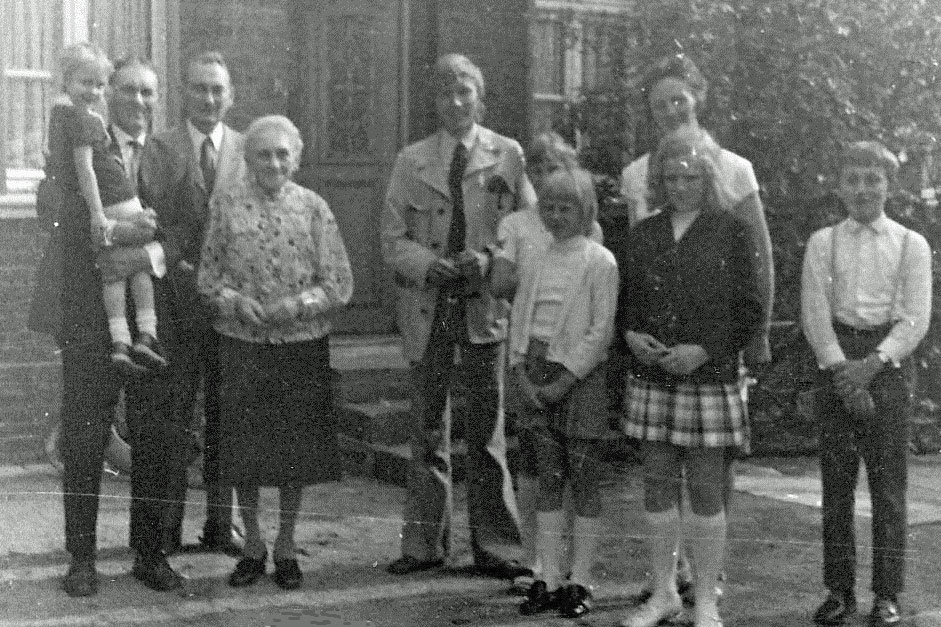Photo and bio of Rev. Joseph G. Westhues
The gravestone of Wilhelm and Theresia Westhues in Washington Cemetery, Glasgow, Mo. Note that his name is carved as the English William.
The official website of the town of Werne, Nordrhein-Westfalen, Deutschland, and the town's webpage on the English-language Wikipedia. |
The homeplace in Münsterland
There was a finality almost unimaginable today to Wilhelm and Theresia’s move to America. Migration meant pulling themselves out of the soil along the Lippe River in Germany, and then quickly and permanently setting themselves into the soil along the Missouri River in America. Their move was not just an uprooting. It was a final transplanting. Glasgow and St. Mary’s Parish became the new, all-embracing center of their lives, the anchor or touchstone, the place to which their identities were tied, the place they seldom left.
A few years after their son Joseph was ordained a priest in St. Louis in 1907, he offered to escort his parents back to their and his native land. After twenty years of hard work and careful management in the thriving American agricultural economy, they could afford the trip. But their youngest children were still in their teens. Their oldest daughter, named Theresia after her mother and grandmother, was in frail health. They delayed the trip. Then came the Great War of 1914-1918. Travel to Europe was out of the question. Wilhelm died in 1921, Theresia in 1926, without ever having seen their German kin again, nor the homes of their ancestors.
Neither would any of Wilhelm and Theresia’s children ever return to the Münsterland homeplace. Most had young families in the 1920s and 1930s. Travel abroad was a luxury beyond reach, especially during the Depression. Further, on account of anti-German sentiment during the Great War, the second and third generations in America felt pressure to distance themselves from their German roots. Indeed, the name on Wilhelm’s gravestone is William. I was puzzled as a child that the name on Uncle Fritz’s mailbox was Fred. The effect of World War II, in which at least nine of Wilhelm and Theresia’s grandsons served in the American armed forces, while German cousins fought on the German side, was to drive deeper the wedge between the New-World and Old-World branches of the Westhues family.
Meanwhile, the homeplace in Münsterland endured, handed down from one generation to the next, lovingly maintained, worked and treasured as it had been for centuries. Its postal address is Hellstrasse 19, Werne, Deutschland, an overwhelmingly Catholic town whose population has by now reached 30,000. The farm is 3.5 miles northeast of the center of Werne, just as the Missouri homeplace is 3.5 miles northeast of the center of Glasgow. It is on the edge of a small hamlet called Horst, but for business, school, and church, one must drive to Werne. The 900-year-old St. Christopher's Parish Church is in the center of Werne, next to the old city hall and market. There is a chapel to St. Mary in Horst, a short walk from the homeplace.
When Wilhelm and Theresia left for America, his father Theodore still presided over the homeplace. He died in January 1893. The farm then passed to Wilhelm's elder brother, in keeping with the old feudal law of primogeniture. When this brother died, it passed to his son, also named Theodore. |
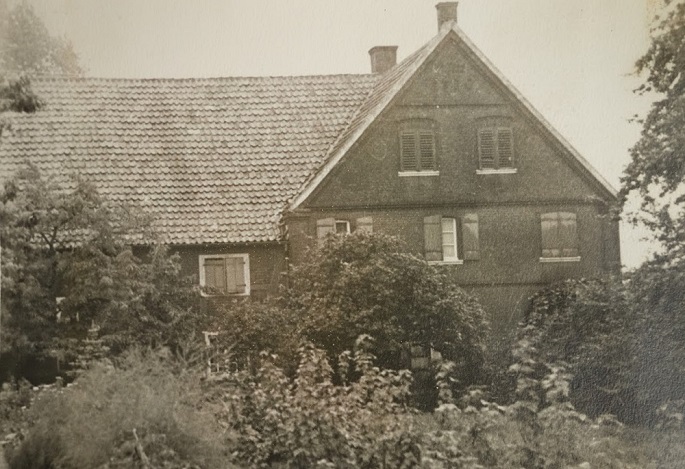
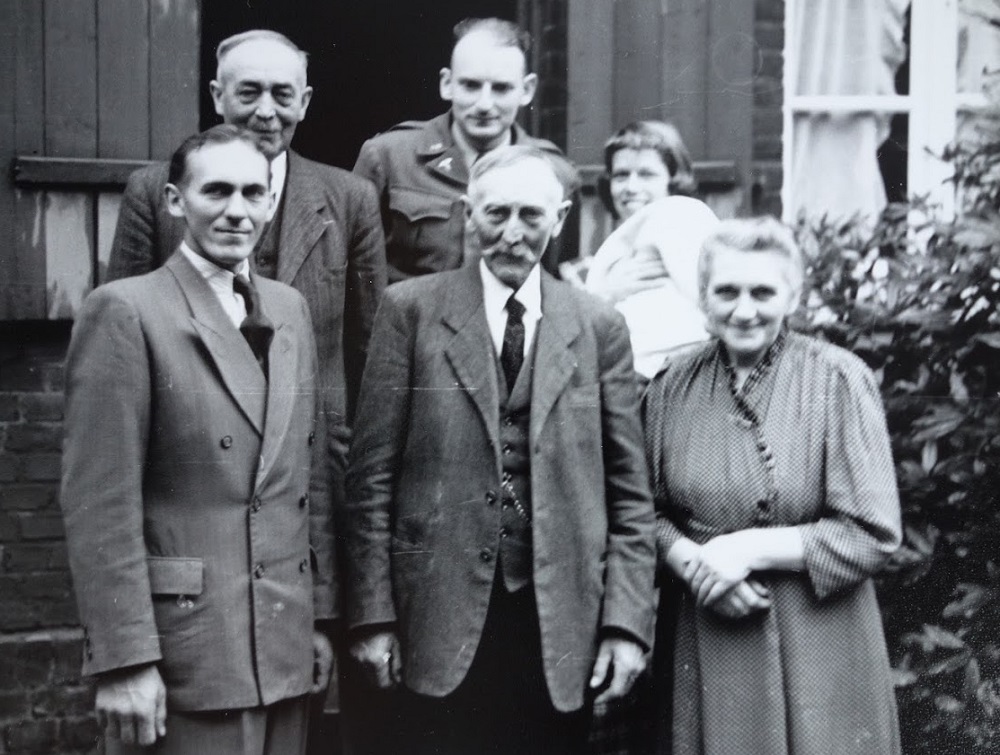
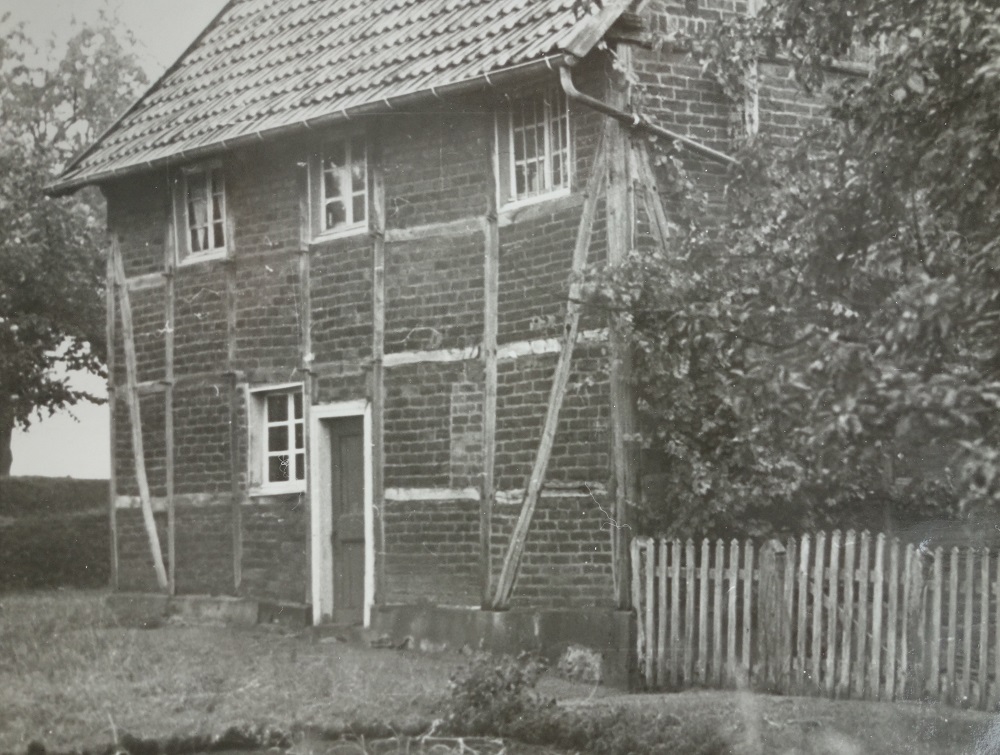
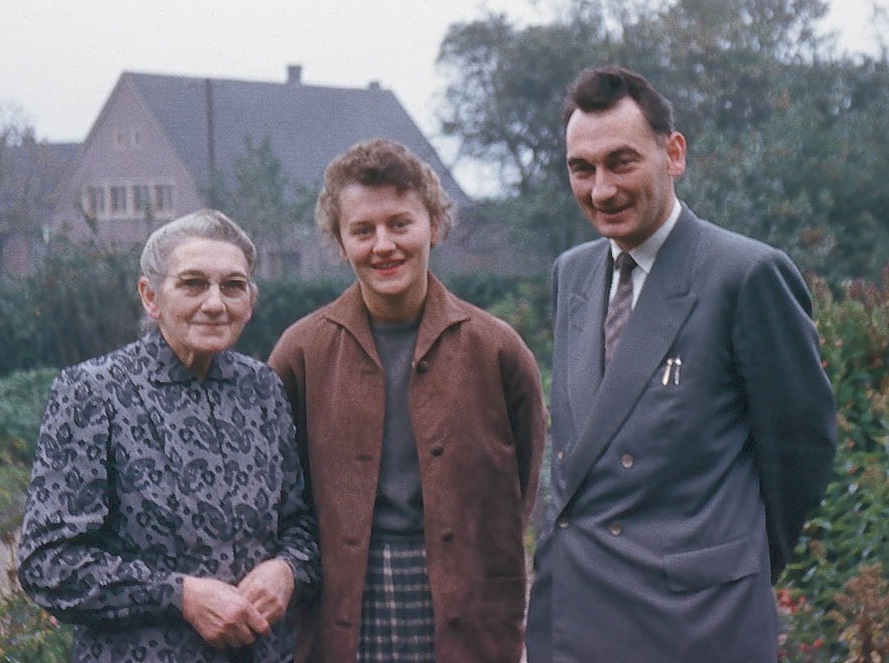
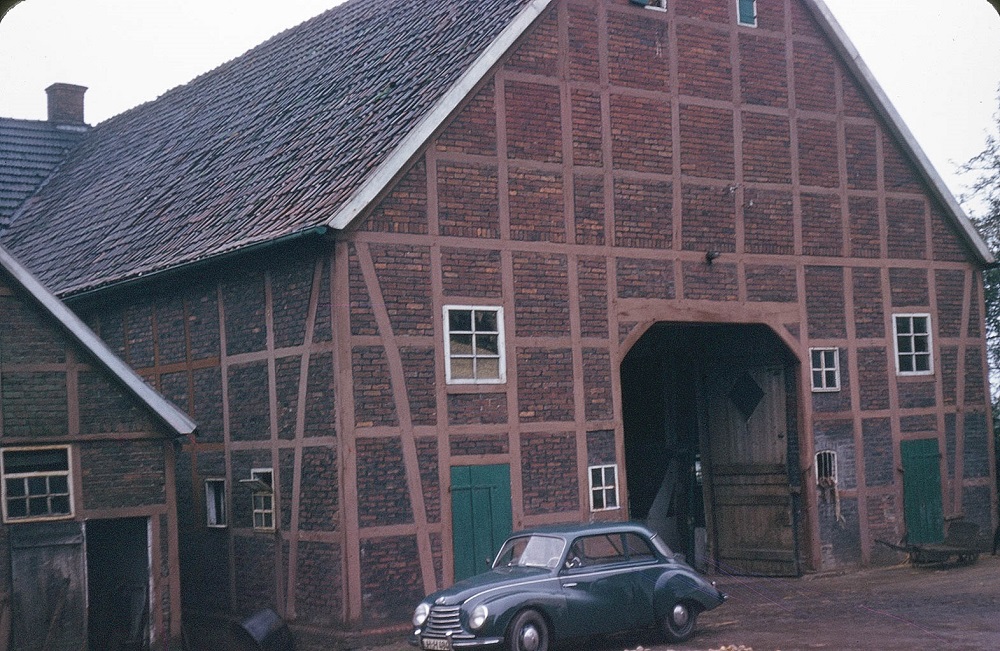
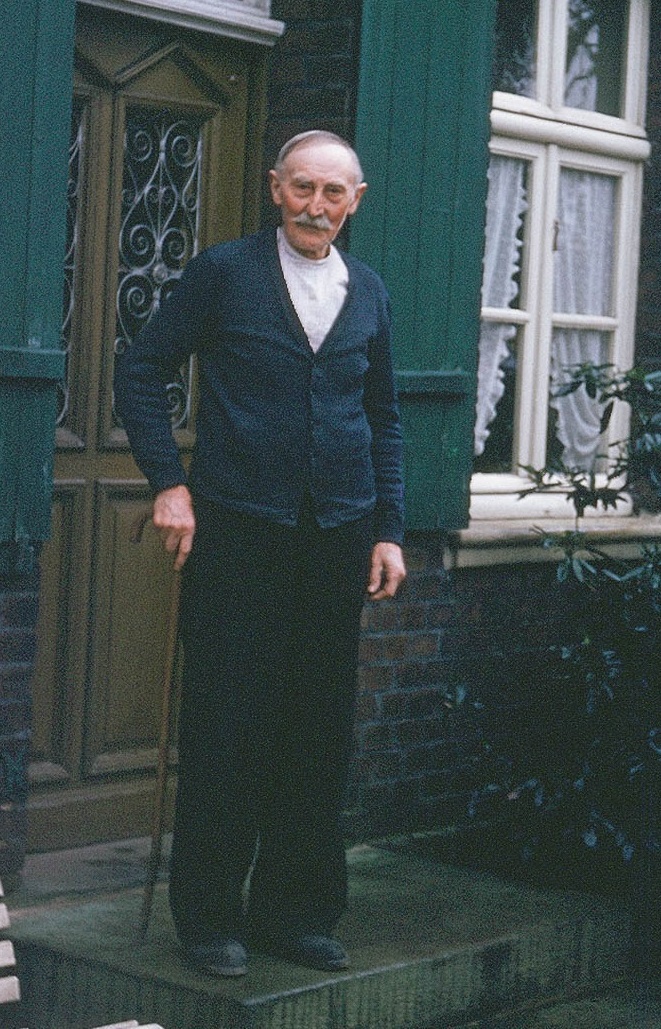 His wife, Antonia, whose sweet and welcoming smiles put us at ease, along with Elisabeth, served the meal with decorum and dignity. Sons Franz and Ludger, who both spoke some English, with mischievous twinkles in their eyes, struggled, as I did, to keep up a conversation about their life stories and ours, translating for their father, Theodore, who had many questions about the Westhues clan in America. After breakfast, Theodore brought forth a wooden box with a lid that held letters, post cards and pictures that were received from Wilhem Westhues starting from when he first arrived in America, continuing over the ensuing years from his son, our Uncle Theodore, in Glasgow. Clearly, the Westhues family in Germany treasured these communications with several generations of their American family that continued through two world wars and more. Amazing! I wonder if that treasure box still exists.
His wife, Antonia, whose sweet and welcoming smiles put us at ease, along with Elisabeth, served the meal with decorum and dignity. Sons Franz and Ludger, who both spoke some English, with mischievous twinkles in their eyes, struggled, as I did, to keep up a conversation about their life stories and ours, translating for their father, Theodore, who had many questions about the Westhues clan in America. After breakfast, Theodore brought forth a wooden box with a lid that held letters, post cards and pictures that were received from Wilhem Westhues starting from when he first arrived in America, continuing over the ensuing years from his son, our Uncle Theodore, in Glasgow. Clearly, the Westhues family in Germany treasured these communications with several generations of their American family that continued through two world wars and more. Amazing! I wonder if that treasure box still exists.

